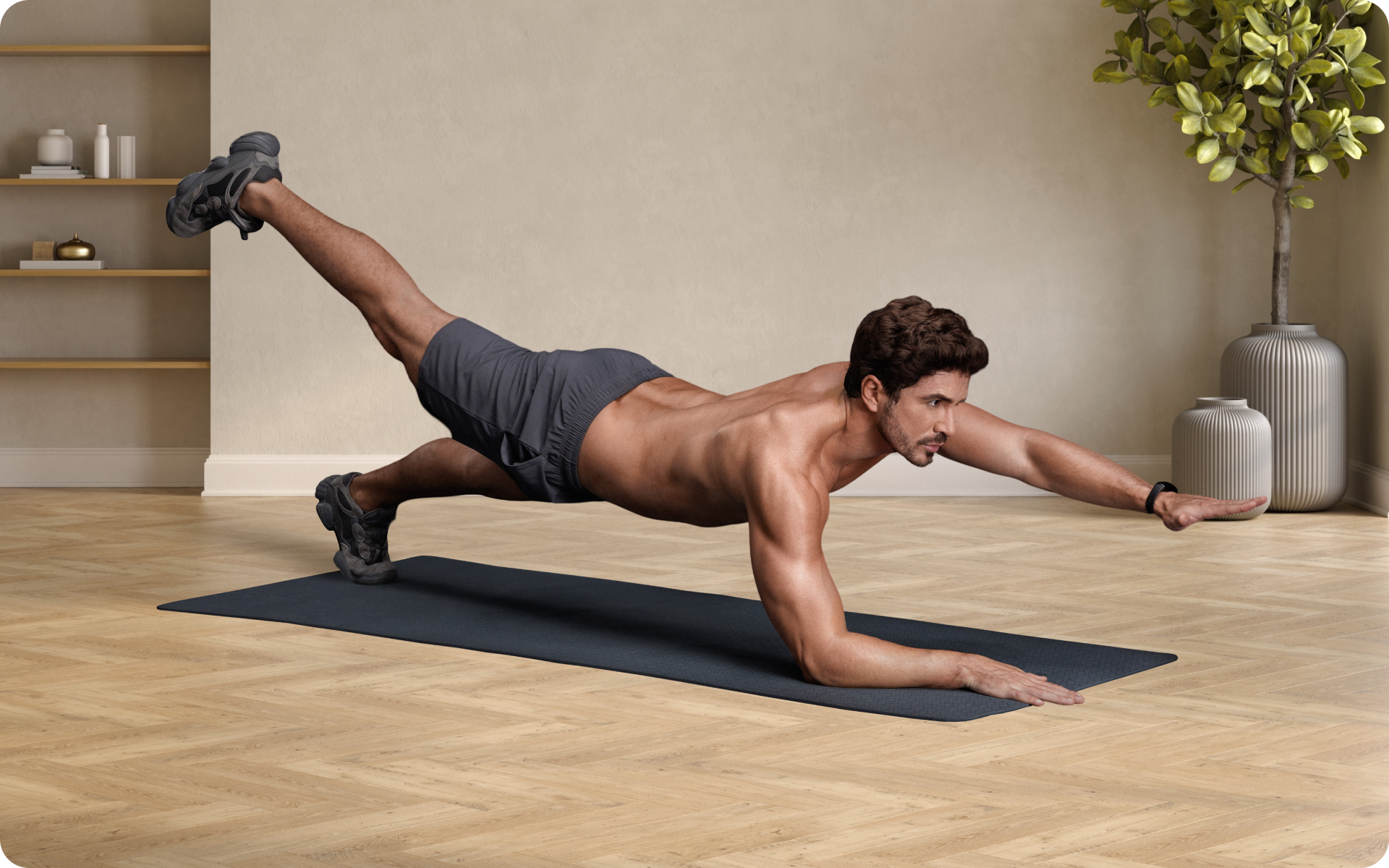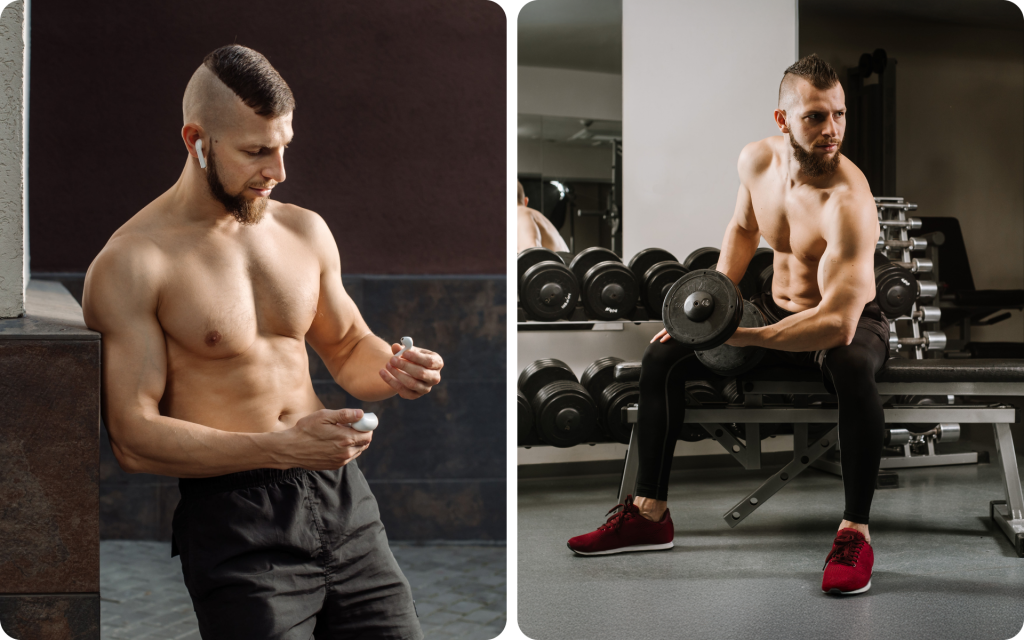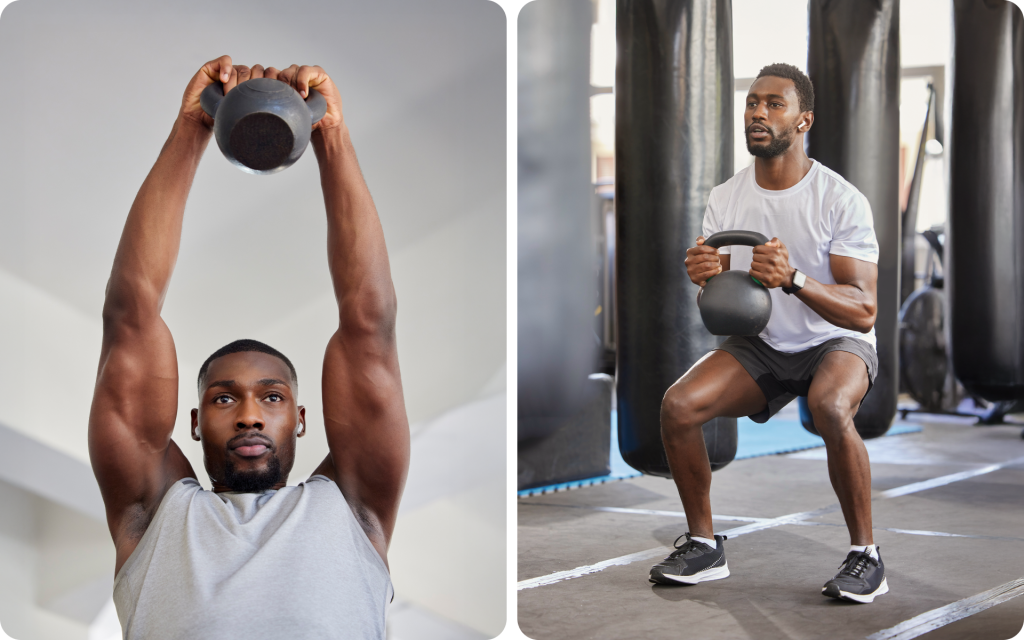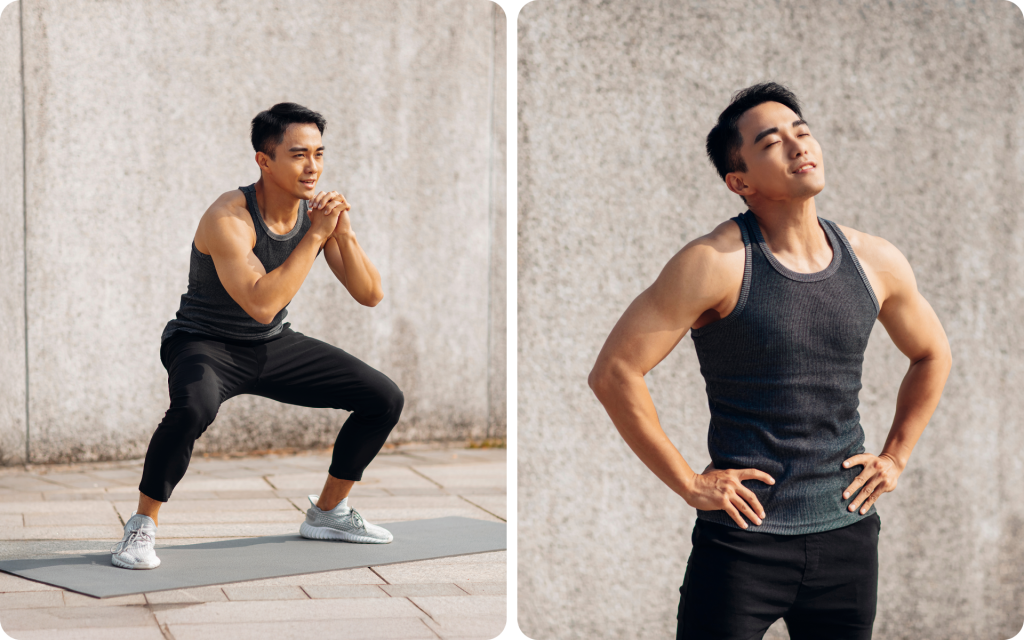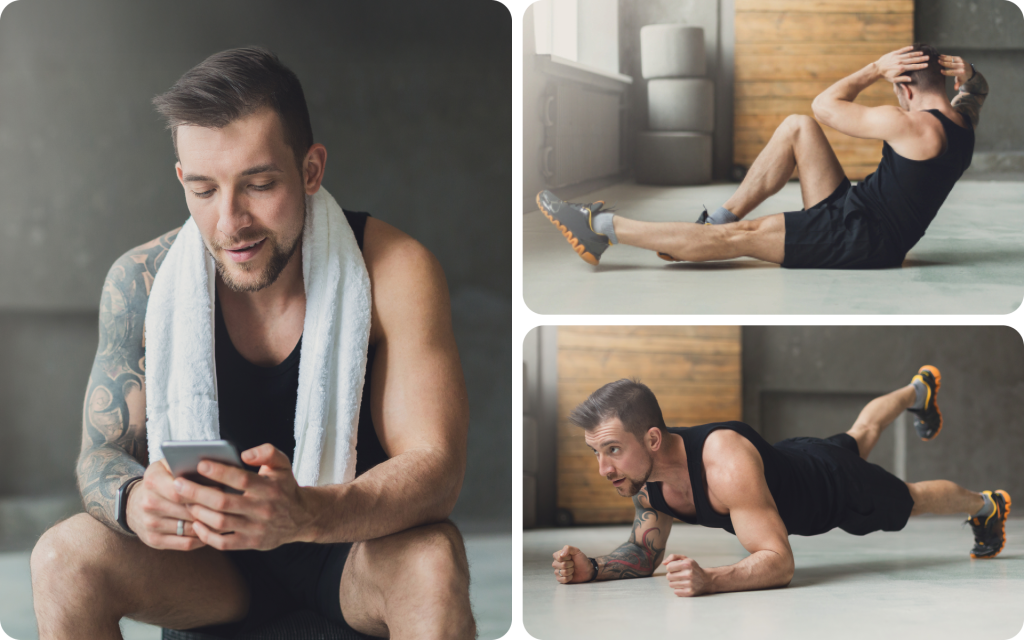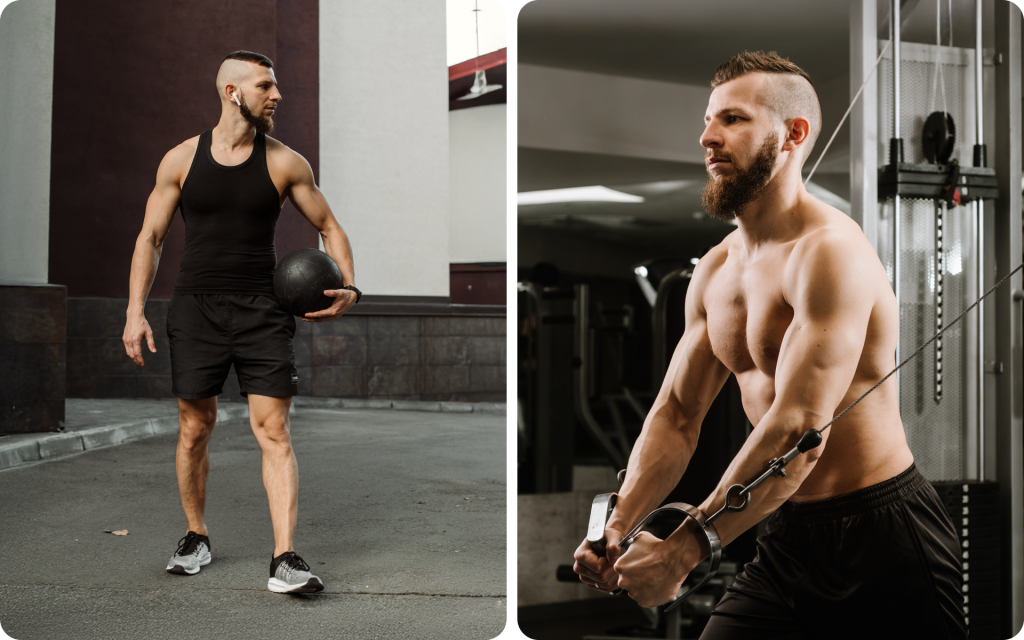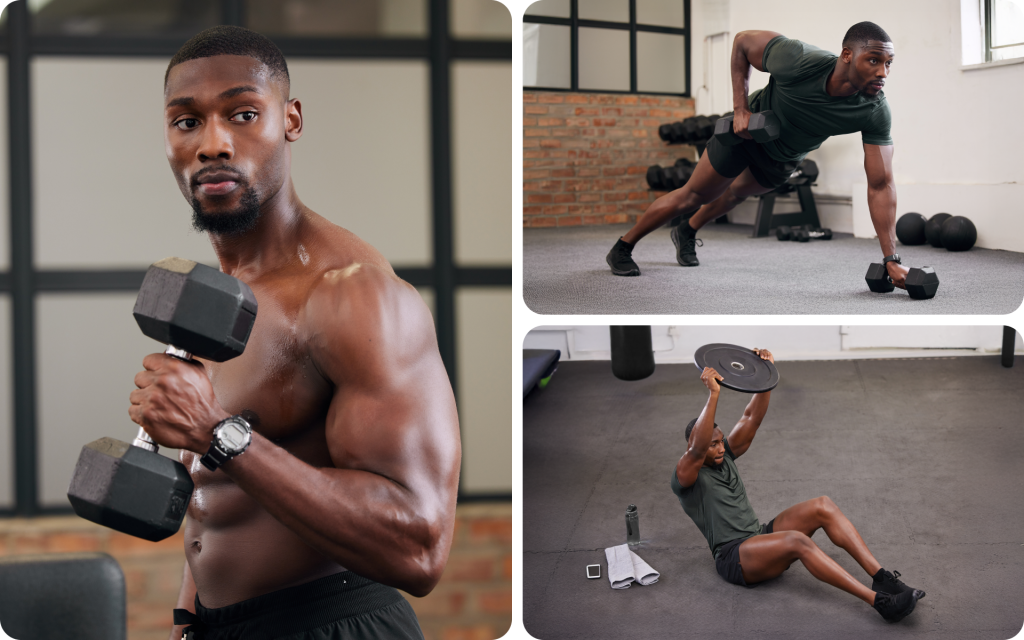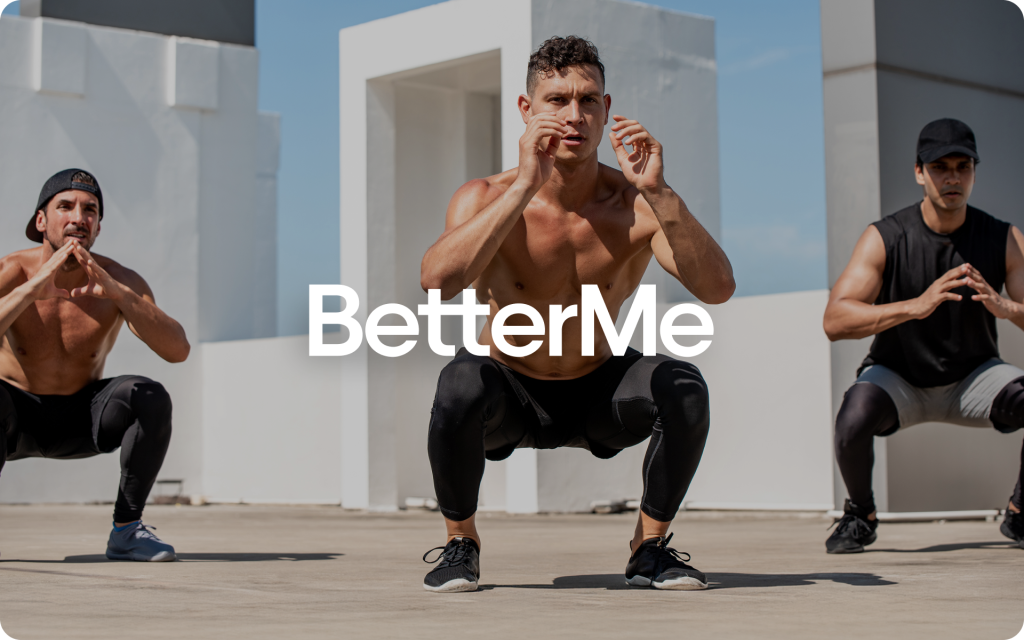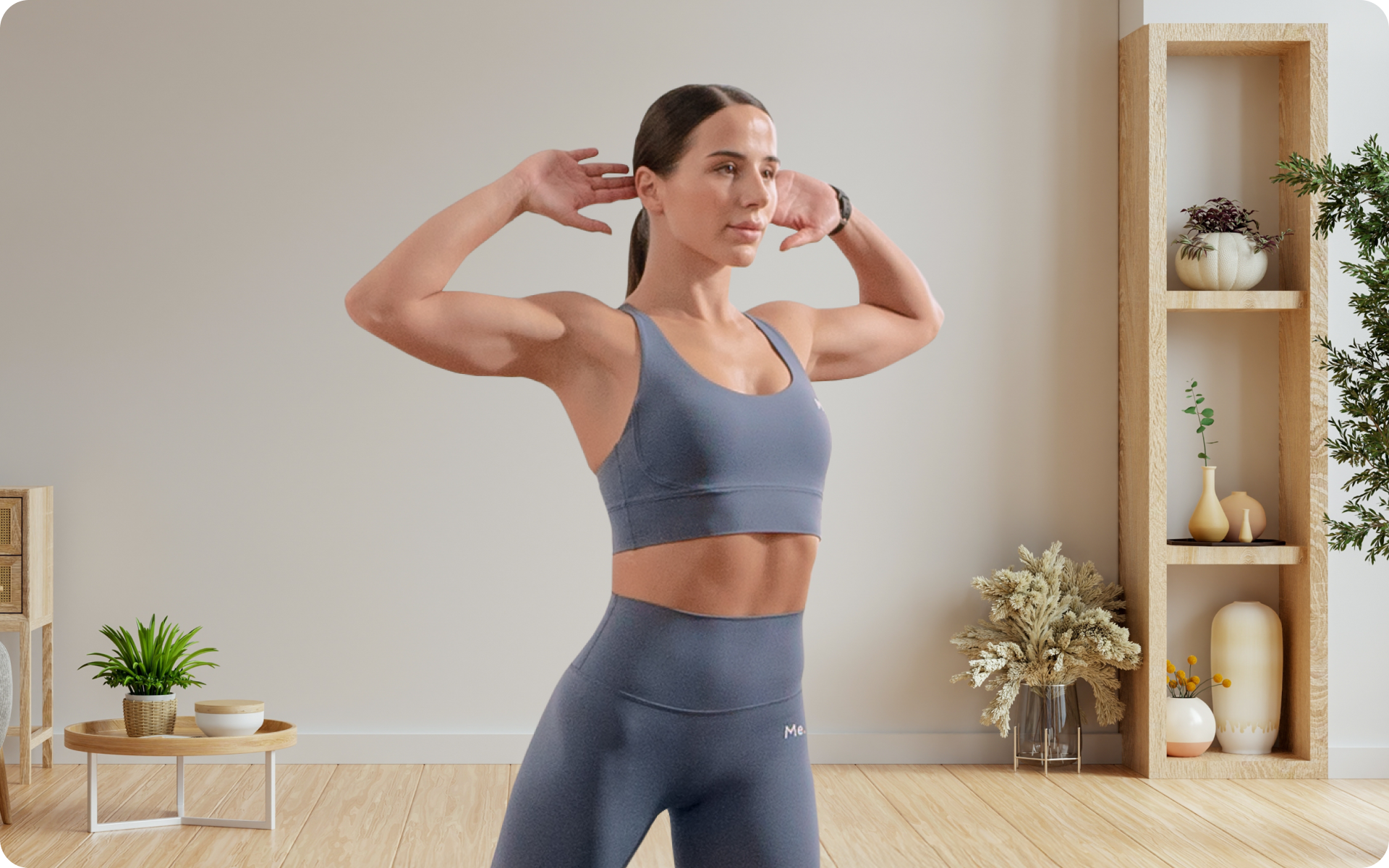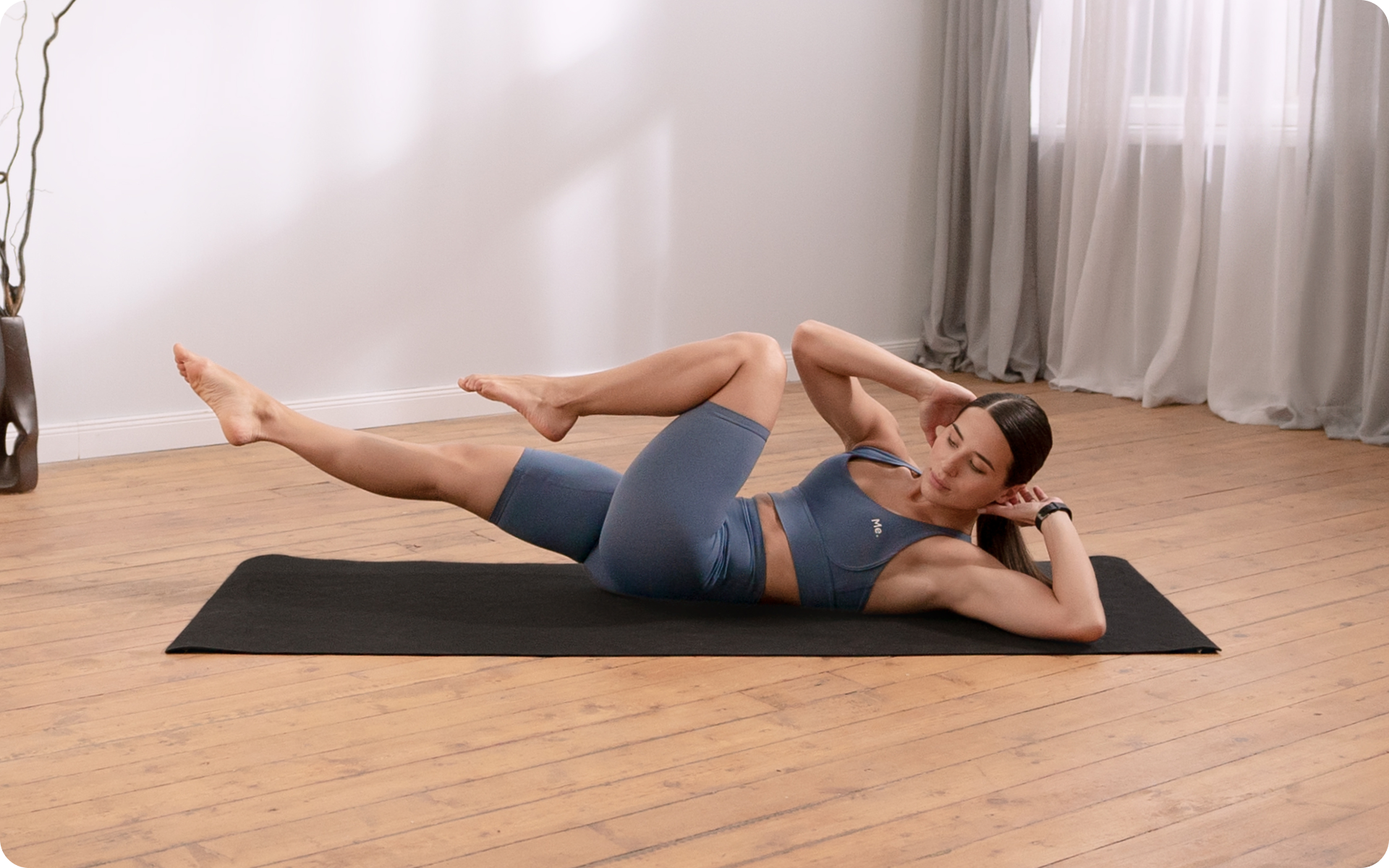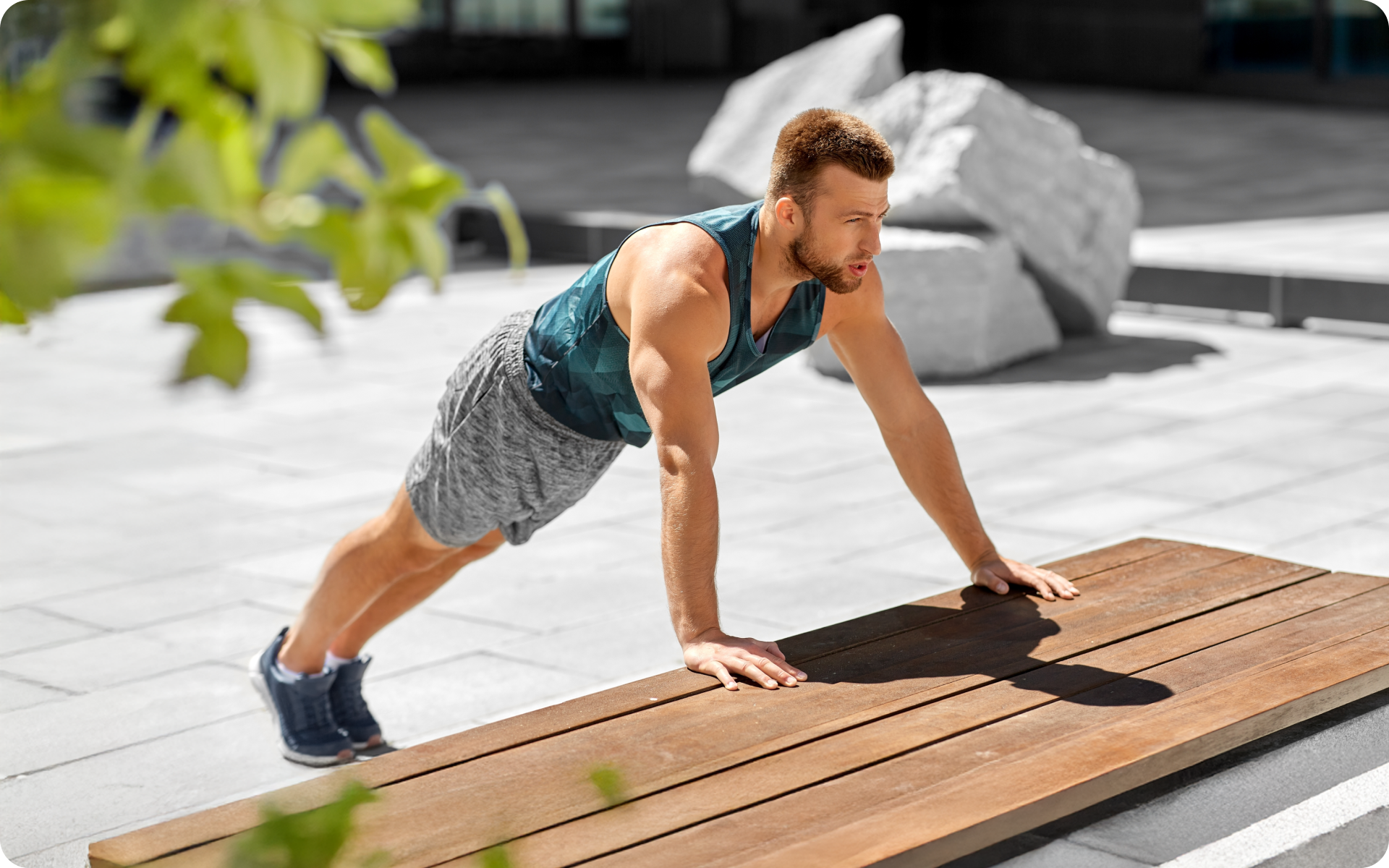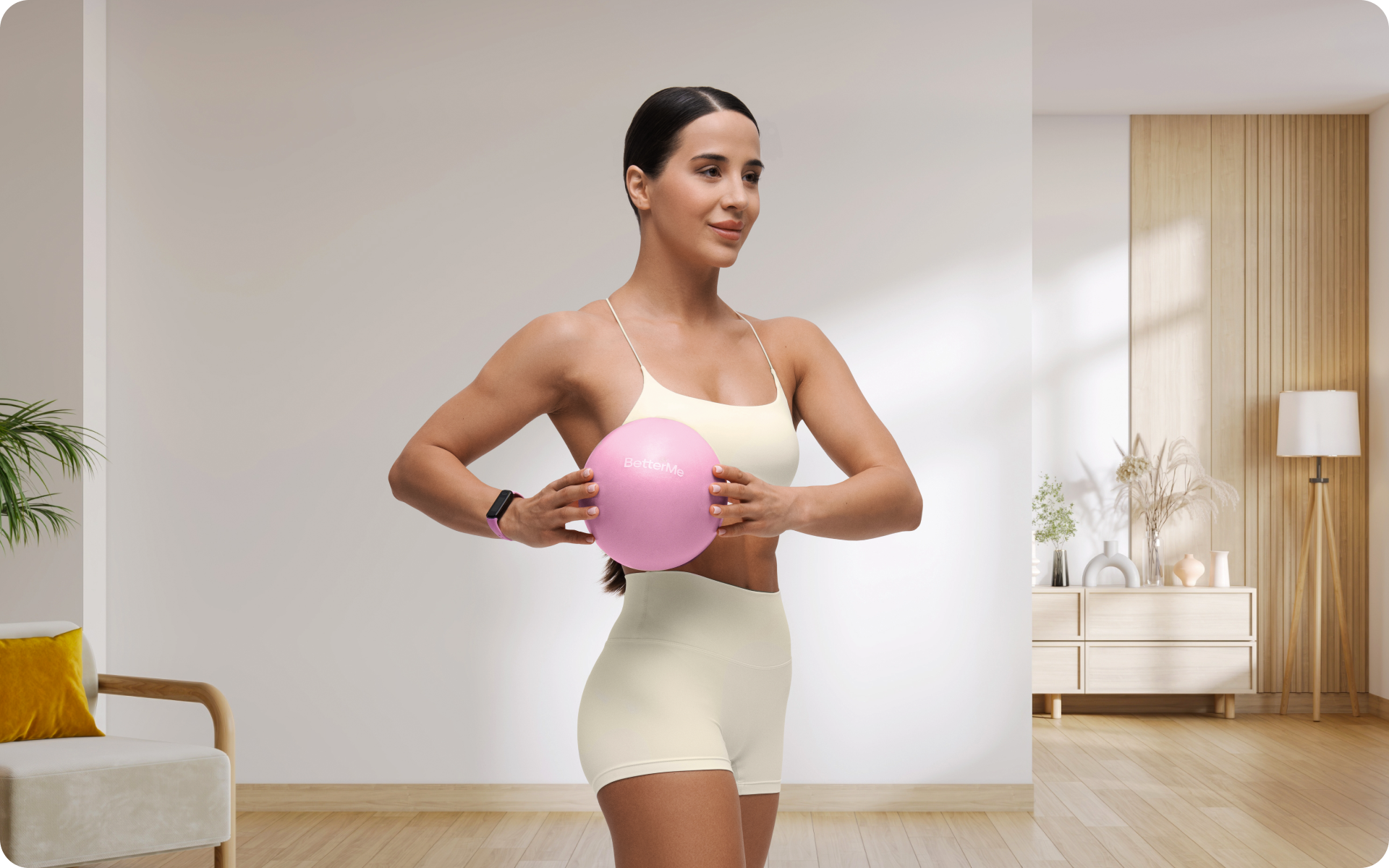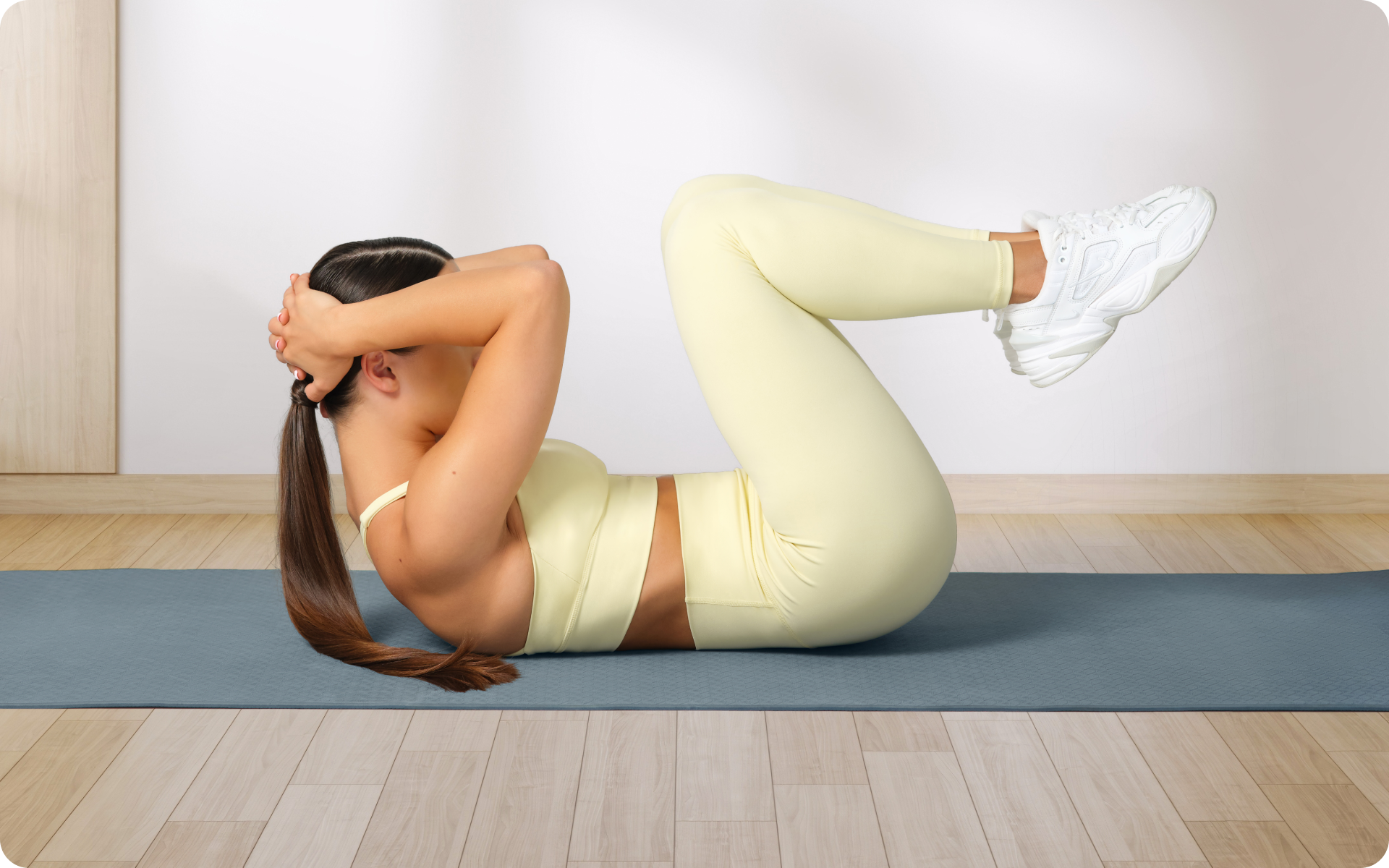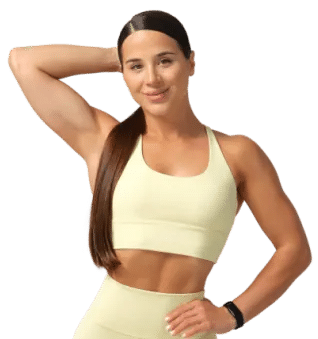What we call a “pump” is a temporary increase in muscle size and tightness that occurs during and immediately after a workout.
It occurs when blood flow to the muscles increases during exercise, delivering oxygen and nutrients while also creating a buildup of metabolic byproducts, such as lactic acid.
This increased blood flow causes the muscles to swell, giving them a fuller, more defined appearance (1).
Many want to achieve “the pump” because it not only feels great but also gives that “muscular” look, making it a favorite for bodybuilders and fitness enthusiasts before events, photos, or just to boost confidence.
Here’s what to do in 30 minutes to get that coveted pump.
How Long Should An Upper Body Workout Take?
The ideal length of an upper body workout depends on your goals, fitness level, and recovery capacity. For most individuals, 45-60 minutes is the ideal duration, ensuring sufficient time for warm-up, proper volume, and rest between sets.
Shorter sessions, around 30 minutes, can be practical for beginners, maintenance, or high-intensity circuits. Most trainers will tailor longer sessions, exceeding an hour, toward advanced athletes, focusing on hypertrophy or performance-specific goals.
Regardless of duration, balancing intensity and recovery is key to ensuring consistent progress without overtraining.
Can A 30-Minute Upper Body Workout Be Effective?
A 30-minute upper body workout can be effective, depending on your goals, fitness level, and overall lifestyle. While it isn’t a one-size-fits-all solution, it can serve a wide range of purposes for different individuals.
What Can A 30-Minute Session Achieve?
First, it’s crucial to understand how exercise impacts the body.
When you engage in strength-based movements, your muscles experience tension, which stimulates growth and adaptation (2).
Even in a short session, you can achieve sufficient muscle activation to enhance strength, endurance, and muscle tone.
- Muscle Activation: A 30-minute workout is sufficient to target key upper body muscle groups like the chest, shoulders, and arms. While it may not lead to significant hypertrophy (muscle growth) on its own, frequent shorter sessions can help build a foundation for strength and definition over time (3).
- Blood Flow and Pump: These workouts increase blood flow to the upper body, offering that “pump” effect. The increase in blood flow temporarily enhances the appearance of muscle size while also delivering nutrients that assist recovery (1).
- Skill Maintenance: For individuals with a foundation in fitness, a shorter workout helps maintain strength and coordination. It keeps muscles active without the commitment of a longer workout.
- Convenience Without Sacrifice: Time-efficient sessions cater to people who may not have an hour to spare yet still want to stay consistent. It allows you to keep your fitness on track without significantly disrupting your day.
BetterMe: Health Coaching app helps you achieve your body goals with ease and efficiency by helping to choose proper meal plans and effective workouts. Start using our app and you will see good results in a short time.
What Can’t It Do?
While it has its benefits, there are certain limitations to a 30-minute workout:
- Limited Hypertrophy: Building significant muscle mass requires consistent progressive overload and adequate volume (4). A more extended session is often necessary to target larger muscle groups and stimulate growth effectively.
- Lack of Overall Balance: Focusing solely on the upper body in a short session can neglect other areas, such as the lower body or cardiovascular fitness.
For long-term health and performance, a well-rounded program is essential (5).
- Performance Adaptations: For athletes or individuals training to enhance specific performance metrics (such as explosive power or endurance), 30 minutes may not provide enough stimulus. These goals often demand longer sessions with targeted, high-intensity work.
Who Is It For?
- Beginners: People just starting on their fitness journeys benefit from shorter, manageable sessions. They provide enough stimulus to see progress without being overwhelming.
- Time-Constrained Individuals: A 30-minute session is ideal for busy professionals, caregivers, or anyone pressed for time. It allows them to prioritize their health without a time-consuming investment.
- Maintenance-Focused: If you’re in a maintenance phase, these sessions are ideal for staying consistent without overtraining.
- Those Seeking Specific Results: Individuals seeking improved muscle tone, better posture, or general strength would find a short upper body workout effective over time.
Read more: Calisthenics for Skinny Guys: 8 Exercises to Build Muscle
What Is A Pump-Inducing 30-Minute Upper Body Workout?
Here’s a quick 30 minute upper body workout no equipment, calisthenics-style, to get pumped up:
Warm-Up (3-5 minutes)
- Arm Circles: 30 seconds forward, 30 seconds backward.
- Push-Up to Downward Dog: 8-10 reps.
- Jumping Jacks: 1 minute.
Main Workout (20-25 minutes)
Circuit 1 (Repeat 3 times)
- Push-Ups: 12-15 reps (standard or knee push-ups if needed).
- Tricep Dips: Use a sturdy surface, such as a chair, or perform floor dips – 12-15 reps.
- Plank Shoulder Taps: 20 taps (10 per side).
- Superman Hold: Hold for 30 seconds.
Circuit 2 (Repeat 3 times)
- Wide Arm Push-Ups: 12-15 reps (targets chest and shoulders).
- Pike Push-Ups: 10-12 reps (focuses on shoulders).
- Side Plank Rotations: 10 reps per side.
- Superman Pulls: 12-15 reps (simulate pulling motion while lying on your stomach).
Cool Down
Gentle stretches for the shoulders, chest, and triceps can help ease muscle tension and boost recovery.
Follow these steps to execute each exercise in the 30-minute workout program:
Warm-Up (3-5 Minutes)
Arm Circles
Engages shoulders, rotator cuffs, and upper back muscles. Improves shoulder mobility.
Steps:
- Stand straight with your arms extended out to your sides, parallel to the floor.
- Make small forward circles with your arms for 30 seconds.
- Reverse direction and make small backward circles for another 30 seconds.
Push-Up to Downward Dog
Transitions from a pushing movement to a stretch, activating chest, shoulders, triceps, and lengthening your posterior chain.
Steps:
- Start in a push-up position with your back straight and core tight.
- Lower to the ground in a controlled manner, then push back up.
- Shift your weight backward to lift your hips into a downward dog position, forming an inverted V shape.
- Return to the plank position and repeat for 8-10 reps.
Jumping Jacks
Gets the blood flowing by engaging muscles throughout your body, particularly the shoulders, chest, and legs.
Steps:
- Stand tall with your feet together and arms at your sides.
- Jump slightly while spreading your legs shoulder-width apart and bringing your arms overhead.
- Return to the starting position and repeat continuously for 1 minute.
Circuit 1
Push-Ups
Biomechanics: Engages the core for stability.
Steps:
- Begin in a plank position, with hands slightly wider than shoulder-width apart.
- Lower your body until your chest is nearly touching the floor, keeping your elbows at about a 45-degree angle.
- Push back up to the starting position. Perform 12-15 reps.
Tricep Dips
Isolates the triceps using an extension motion—secondary engagement in the shoulders and chest.
Steps:
- Sit on the floor or a sturdy surface and place your palms behind you, fingers pointing forward.
- Lift your hips slightly and bend your elbows to lower your body.
- Straighten your arms to return to the starting position. Perform 12-15 reps.
Plank Shoulder Taps
Strengthens the shoulders, triceps, and core while improving balance and stability.
Steps:
- Get into a high plank position with your feet slightly apart.
- Tap your right shoulder with your left hand while keeping your body stable.
- Alternate sides and repeat for 20 taps (10 per side).
Superman Hold
Engages the back extensors, shoulders, and glutes, creating tension in the posterior chain.
Steps:
- Lie flat on your stomach with arms extended forward.
- Simultaneously lift your arms, chest, and legs off the ground.
- Hold this position for 30 seconds before relaxing.
Circuit 2
Wide Arm Push-Ups
Similar to standard push-ups, but emphasizes the chest and shoulders due to the wider hand placement.
Steps:
- Place your hands wider than shoulder-width apart in a plank position.
- Lower your body toward the floor, keeping your back straight and elbows slightly flared.
- Push back up to start. Perform 12-15 reps.
Pike Push-Ups
Targets the shoulders with vertical pressing mechanics. Also engages the triceps and upper chest.
Steps:
- Start in a downward dog position with your hips high and hands shoulder-width apart.
- Lower your head toward the floor, bending your elbows.
- Push back up to return to the starting position. Do 10-12 reps.
Side Plank Rotations
Activates the obliques, shoulders, and stabilizers through rotational movement.
Steps:
- Begin in a side plank position with your supporting hand directly under your shoulder.
- Rotate your torso and bring your top arm under your body.
- Return to the starting position. Perform 10 reps per side.
Superman Pulls
Focuses on the back muscles (lats and traps) while mimicking a pulling motion.
Steps:
- Lie face down with arms extended forward.
- Lift your chest and legs off the ground, then pull your elbows back as if rowing.
- Extend arms forward again and repeat for 12-15 reps.
Read more: Military Calisthenics Workout: Building Strength, Endurance, and Agility with Bodyweight Exercises
Can You Build Muscle With A 3-Day Upper Body Workout Routine?
Yes, you can build muscle with a 3-day upper body workout routine.
The key lies in how you structure your workouts and whether you’re consistent with supporting habits, such as recovery and nutrition.
Muscle growth happens when you challenge your muscles through resistance training, creating small tears in the muscle fibers. This process, known as hypertrophy, thrives on principles like progressive overload. By gradually increasing the weight, reps, or intensity over time, your body adapts by building stronger and larger muscles (4).
A 3-day routine allows adequate time for recovery. Unlike daily training, it minimizes the risk of overtraining while giving your muscles the rest they need to repair and grow.
Spacing out sessions also helps sustain high-intensity effort during workouts, which is crucial for stimulating growth (6).
However, training alone isn’t enough. Nutrition plays a massive role.
- A diet rich in protein fuels muscle repair.
- Carbs and fats provide the energy needed for training and recovery (7).
For beginners or those with moderate goals, 3 days a week can be an ideal balance of work and rest. It also benefits those focused on upper body progress while addressing other fitness areas on alternate days.
However, keep in mind that significant muscle growth also depends on total weekly volume (8). If you’re targeting advanced hypertrophy goals, pairing this routine with progressive overload and increasing total workload over time will be essential.
How Long Does It Take to Look Muscular?
On average, most people can expect to gain around 1–2 pounds of muscle per month (9). Beginners may see faster initial changes due to “newbie gains,” but long-term transformation takes patience and consistency.
For an average person, noticeable muscle definition might take 3–6 months of dedicated effort (10), while a truly muscular physique could take years of consistent training and proper nutrition.
The time it takes to achieve a muscular appearance varies wildly, depending on several factors. No two people will see results at the same pace, as genetics, training habits, nutrition, and your starting point all influence muscle building.
When it comes to weight loss, progress is made by inches, not miles, so it’s much harder to track and a lot easier to give up. The BetterMe: Health Coaching app is your personal trainer, nutritionist, and support system all in one. Start using our app to stay on track and hold yourself accountable!
Genetics
Genetics play a significant role in how quickly you build muscle.
Some people naturally have a higher proportion of fast-twitch muscle fibers or favorable hormone levels that support growth. Others may require more time and effort to notice noticeable changes (11).
Training Consistency
How often and how well you train also matters. Muscle growth thrives on progressive overload, where you continuously challenge your muscles by lifting heavier weights or increasing the number of repetitions (4).
With consistency and focused training, a 30 minute upper body workout with weights and upper body bodyweight exercises typically leads to visible changes within 8-12 weeks for beginners (10).
However, experienced lifters may need more time to see significant improvements, as they require a higher training stimulus.
Nutrition
Without proper nutrition, even the best training program can fall short.
Protein is essential for muscle repair and growth, while carbohydrates and fats provide energy (7). For muscle definition to show, losing body fat through a calorie-controlled diet might also be necessary, which can lengthen the timeline to achieving a muscular look.
Starting Point
Your fitness baseline has a considerable impact. If you’re starting lean with minimal fat to lose, muscle definition may appear faster. Those starting with higher body fat might need to focus on fat loss and muscle gain simultaneously, which can slow visible progress.
No, you don’t need to lift heavy to build muscle, but progressive overload is critical. Muscle growth happens when you challenge your muscles consistently, whether through a 30 minute weight workout with heavier weights, more reps, or higher training intensity. Lifting lighter weights for more reps can also stimulate muscle growth, as long as you work to near failure, increasing the demand on your muscle fibers. The ideal length of a gym session depends on your goals and fitness level. For most people, 45 to 60 minutes is sufficient to balance warm-ups, adequate training volume, and rest periods. Shorter sessions, around 30 minutes, can work well for high-intensity or maintenance-focused workouts. You can also use the shorter sessions for a 30 minute upper body workout at home. Extended gym sessions over 60 minutes may be necessary for advanced lifters aiming for hypertrophy or skill development. You’re getting stronger but not bigger because different adaptations control strength and size. Strength improvements often come from neurological adaptations, such as better motor unit recruitment or coordination, rather than muscle growth. To promote hypertrophy, focus on progressive overload, higher training volumes, and a diet that supports muscle repair and growth. It depends on your goal. For strength, lifting heavier weights with fewer reps (around 3–6 per set) is more effective. For muscle growth, moderate weights with more reps (6–12 per set) provide an optimal balance. Lighter weights with higher reps (15+ per set) can improve endurance. Regardless, progressive overload should guide your decision to consistently challenge your muscles.Frequently Asked Questions
Do you need to lift heavy to build muscle?
How long should a gym session be?
Why am I getting stronger but not bigger?
Is it better to do more reps or more weight?
The Bottom Line
A 30-minute upper body workout can be an effective option for many people.
While it can’t replace longer, more comprehensive workouts for specific goals, it’s an excellent tool when used strategically. Its effectiveness depends on selecting smart exercises, maintaining the right intensity, and committing to consistency.
DISCLAIMER:
This article is intended for general informational purposes only and does not serve to address individual circumstances. It is not a substitute for professional advice or help and should not be relied on for making any kind of decision-making. Any action taken as a direct or indirect result of the information in this article is entirely at your own risk and is your sole responsibility.
BetterMe, its content staff, and its medical advisors accept no responsibility for inaccuracies, errors, misstatements, inconsistencies, or omissions and specifically disclaim any liability, loss or risk, personal, professional or otherwise, which may be incurred as a consequence, directly or indirectly, of the use and/or application of any content.
You should always seek the advice of your physician or other qualified health provider with any questions you may have regarding a medical condition or your specific situation. Never disregard professional medical advice or delay seeking it because of BetterMe content. If you suspect or think you may have a medical emergency, call your doctor.
SOURCES:
- Regulation of Increased Blood Flow (Hyperemia) to Muscles During Exercise: A Hierarchy of Competing Physiological Needs (2015, journals.physiology.org)
- How do muscles grow? (n.d., unm.edu)
- Research shows that short, intense workouts are beneficial (2023, uclahealth.org)
- Effects of Resistance Training Overload Progression Protocols on Strength and Muscle Mass (2024, pubmed.ncbi.nlm.nih.gov)
- Diversity in Training and Why It Matters: Five Good Reasons (n.d., strathconaphysicaltherapy.com)
- EXPLORING THE SCIENCE OF RECOVERY (n.d., blog.nasm.org)
- Editorial: Nutritional Strategies to Promote Muscle Mass and Function Across the Health Span (2020, frontiersin.org)
- A Systematic Review of The Effects of Different Resistance Training Volumes on Muscle Hypertrophy (2022, pmc.ncbi.nlm.nih.gov)
- A Systematic Review with Meta-Analysis of the Effect of Resistance Training on Whole-Body Muscle Growth in Healthy Adult Males (2020, mdpi.com)
- Adaptations to Endurance and Strength Training (2018, pmc.ncbi.nlm.nih.gov)
- Genetic Influences on Muscle Strength, Lean Body Mass, and Bone Mineral Density: A Twin Study (2009, academic.oup.com)
